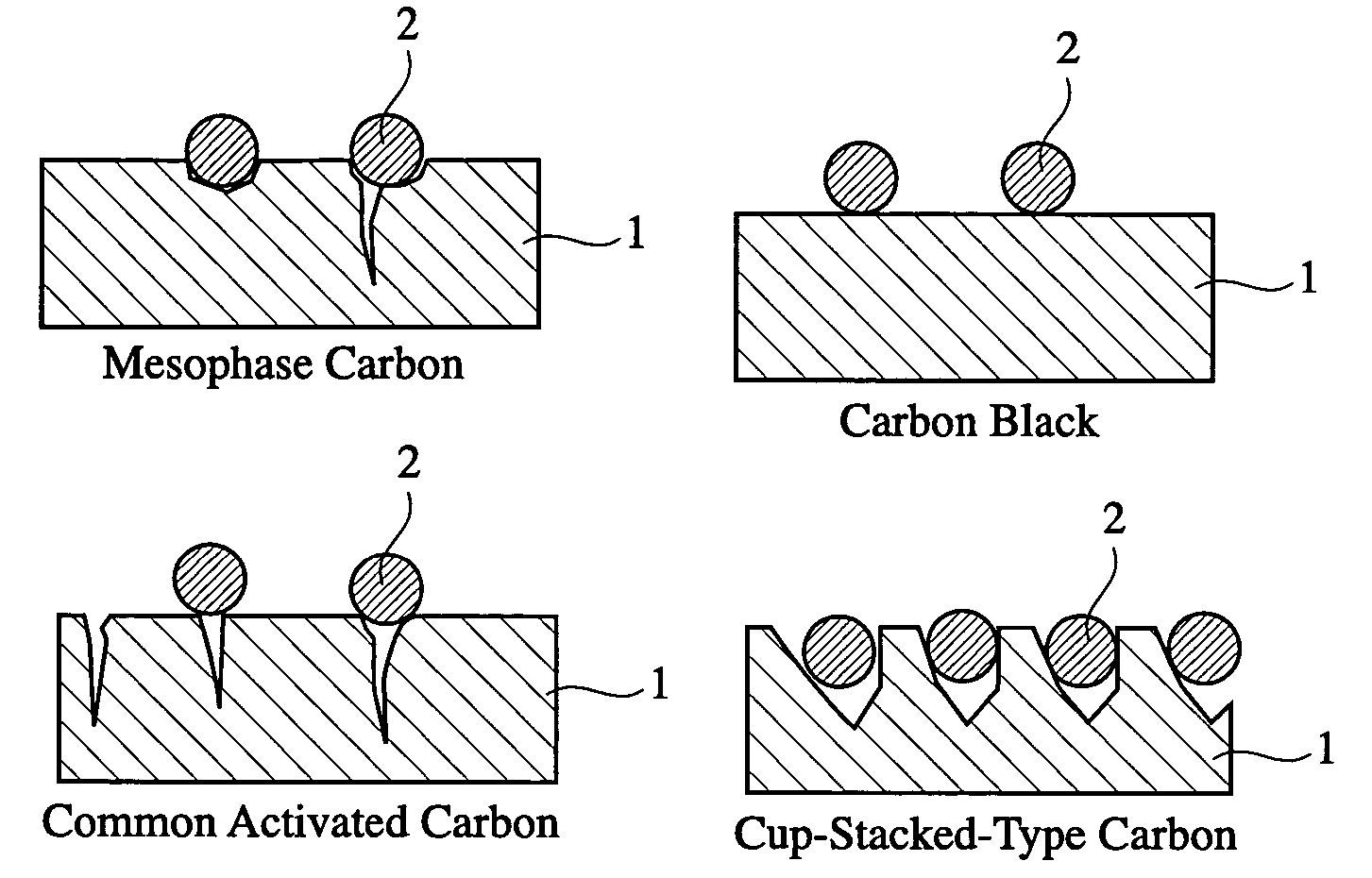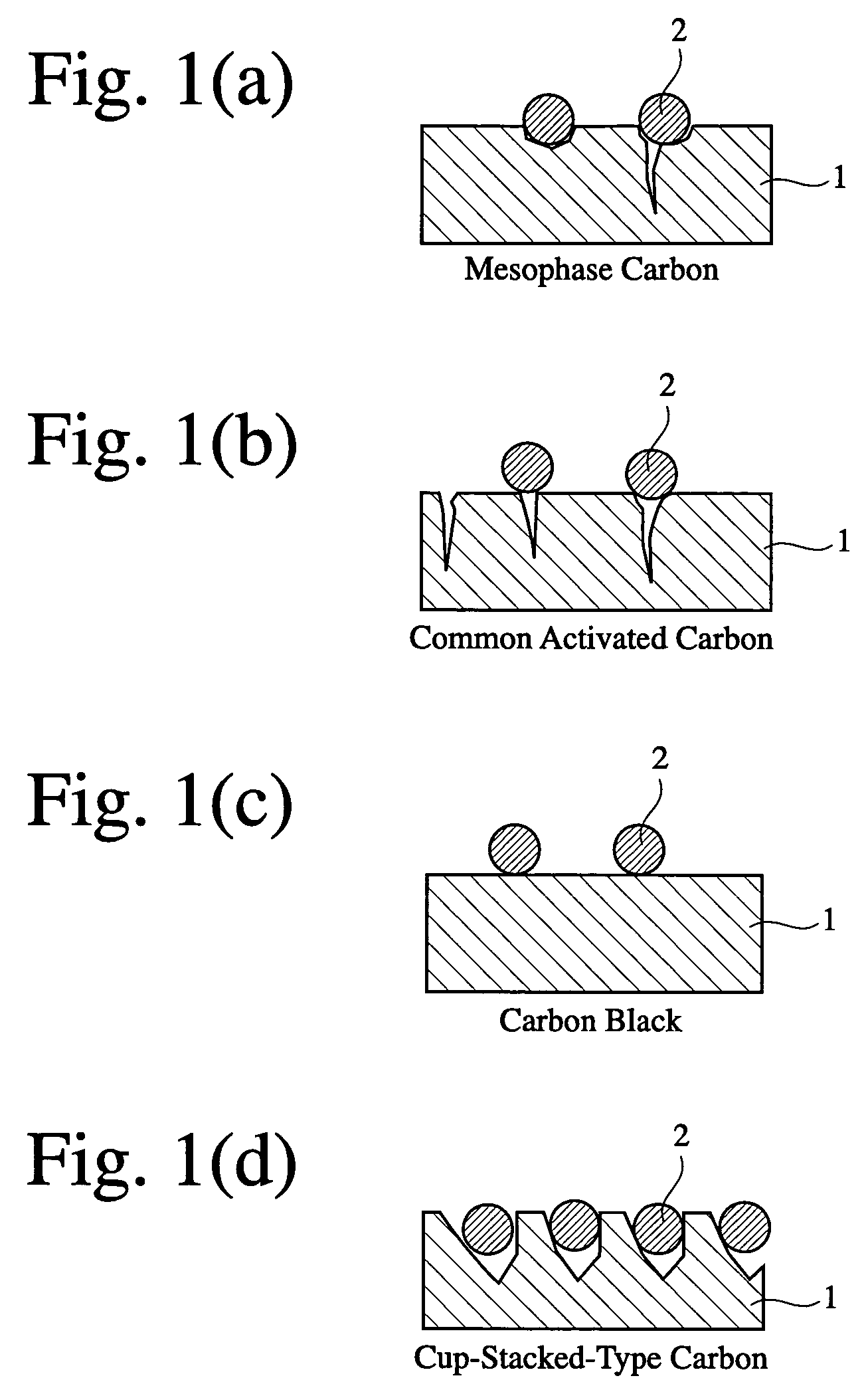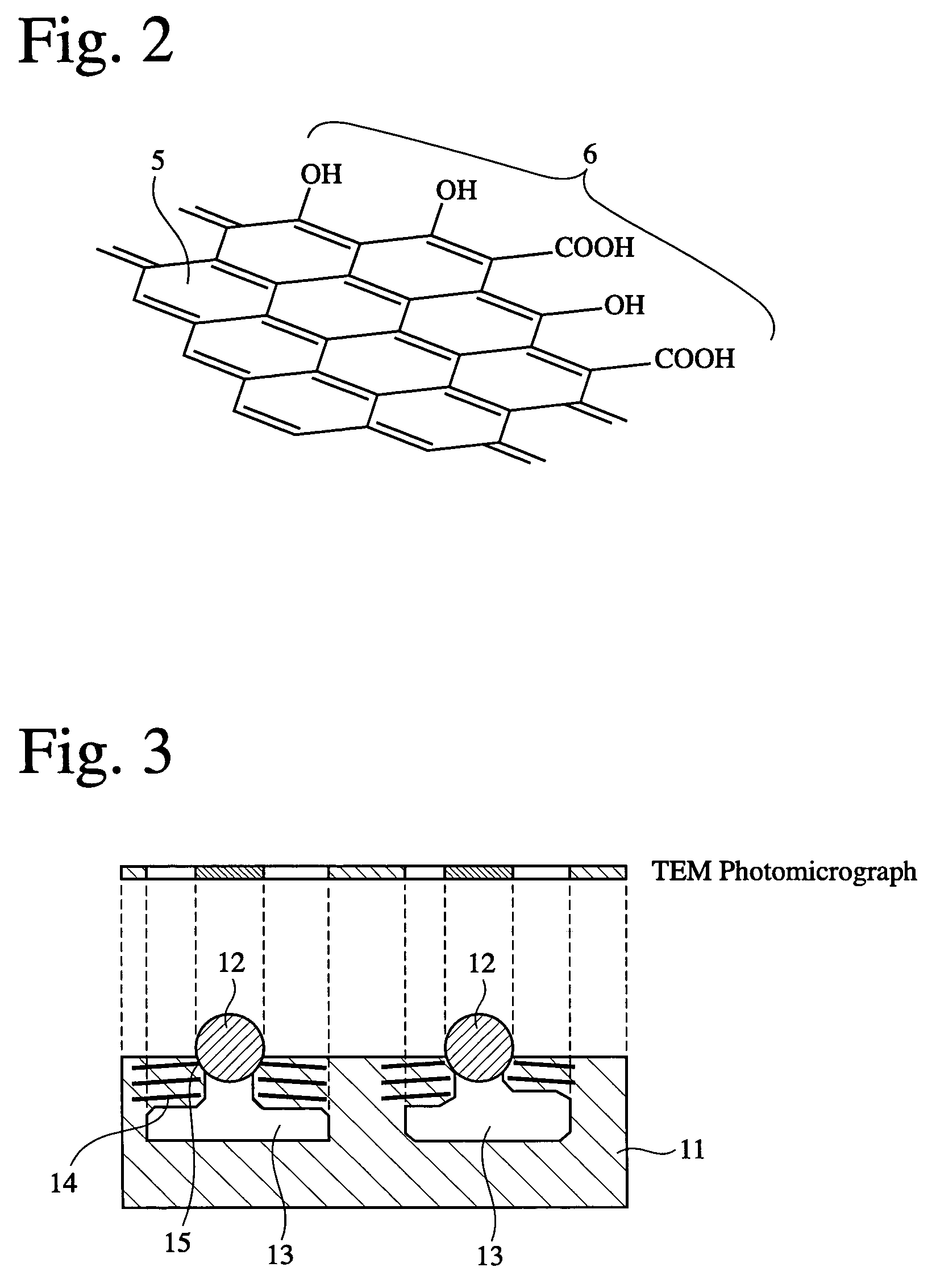Catalyst particle usable for dehydrogenation of alcohols
a technology of alcohol dehydrogenation and catalyst particles, which is applied in the direction of metal/metal-oxide/metal-hydroxide catalysts, physical/chemical process catalysts, cell components, etc., can solve the problems of disadvantageous instability of carriers and the difficulty of fixing dispersed active metals to silicon oxide carriers for a long period of time, and achieve excellent catalytic activity, without substantial deterioration
- Summary
- Abstract
- Description
- Claims
- Application Information
AI Technical Summary
Benefits of technology
Problems solved by technology
Method used
Image
Examples
example 1
(1) Preparation of Carrier Composed of Mesophase Carbon
[0059](a) Preparation of easily graphitizable carbon powder
[0060]A granular mesophase pitch was infusibilized at 320° C. for 10 minutes in airflow, and carbonized at 700° C. for 1 hour in a nitrogen flow, to obtain a carbonized powder. The carbonized powder was subjected to a grinding treatment to control its particle size, to prepare carbon powder having a density of 1.55 g / ml.[0061](b) Alkali activation treatment
[0062]2.5 g of the resultant carbon powder and 5.0 g of an activator comprising KOH pellets and NaOH pellets were put in a mortar and sufficiently mixed while grinding, and the resultant mixture was charged into an Inconel boat. The boat was placed in a tubular furnace, heated to 800° C. at a heating rate of 200° C. / hour in a nitrogen flow of 60 ml / minute, and kept at that temperature for 2 hours. The boat was then taken out of the tubular furnace, and the mixture was subjected to ultrasonic washing with pure water for...
example 2
[0067]Catalyst particles were produced and evaluated with respect to the catalytic activity in the same manner as in Example 1 except for using carbon nanohorns instead of the mesophase carbon for the carrier. The changes of the amount of hydrogen produced with the reaction time are shown in Table 1 and FIG. 19. The catalyst particles of Example 2 according to the present invention had a stable, high catalytic activity, which was hardly reduced with the reaction time. Incidentally, the carbon nanohorns used herein were those prepared by attaching a graphite electrode to a welding machine, subjecting the graphite electrode to arc discharge to produce soot, and rapidly cooling the soot by contact with a stainless steel plate.
example 3
[0068]Catalyst particles were produced and evaluated with respect to the catalytic activity in the same manner as in Example 1 except for using the activated carbon shown in FIG. 10 having a high cavity density and a large surface area (MSC30 available from Kansai Coke and Chemicals Co., Ltd. having a specific surface area of 2400 m2 / g) instead of the mesophase carbon for the carrier. The changes of the amount of hydrogen produced with the reaction time are shown in Table 1 and FIG. 19. The catalyst particles of Example 3 according to the present invention had a stable, high catalytic activity, which was hardly reduced with the reaction time.
PUM
| Property | Measurement | Unit |
|---|---|---|
| particle size | aaaaa | aaaaa |
| diameter | aaaaa | aaaaa |
| diameter | aaaaa | aaaaa |
Abstract
Description
Claims
Application Information
 Login to View More
Login to View More - R&D
- Intellectual Property
- Life Sciences
- Materials
- Tech Scout
- Unparalleled Data Quality
- Higher Quality Content
- 60% Fewer Hallucinations
Browse by: Latest US Patents, China's latest patents, Technical Efficacy Thesaurus, Application Domain, Technology Topic, Popular Technical Reports.
© 2025 PatSnap. All rights reserved.Legal|Privacy policy|Modern Slavery Act Transparency Statement|Sitemap|About US| Contact US: help@patsnap.com



